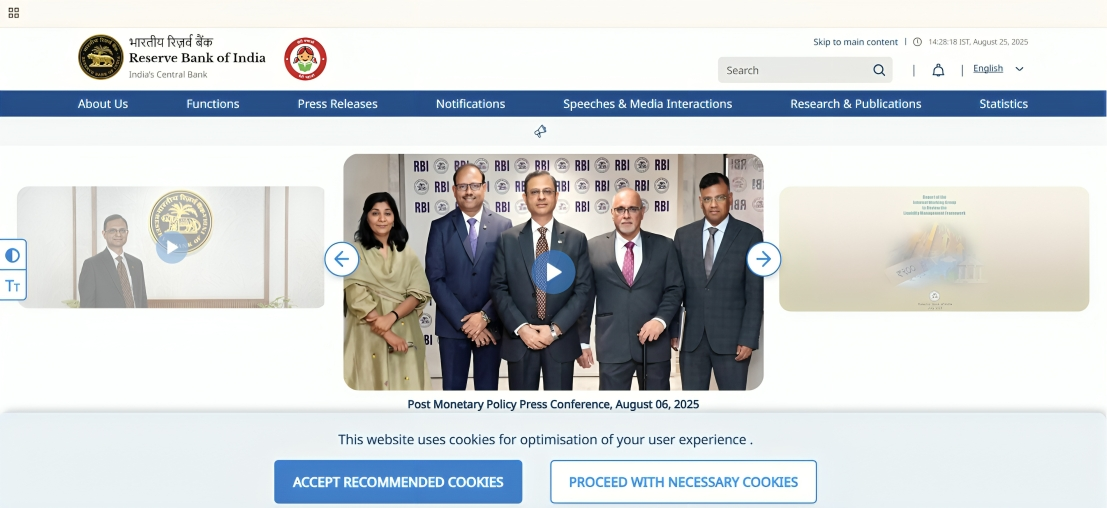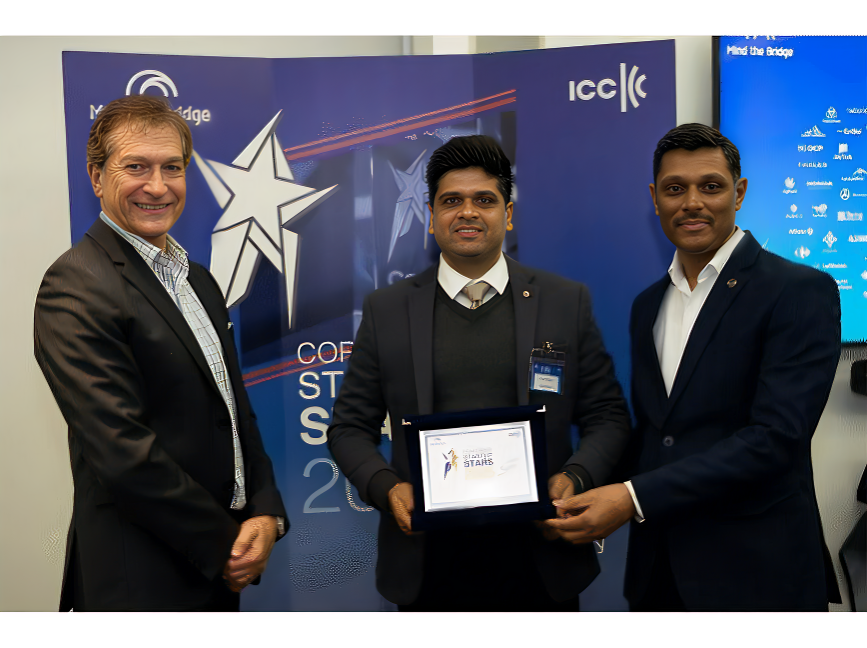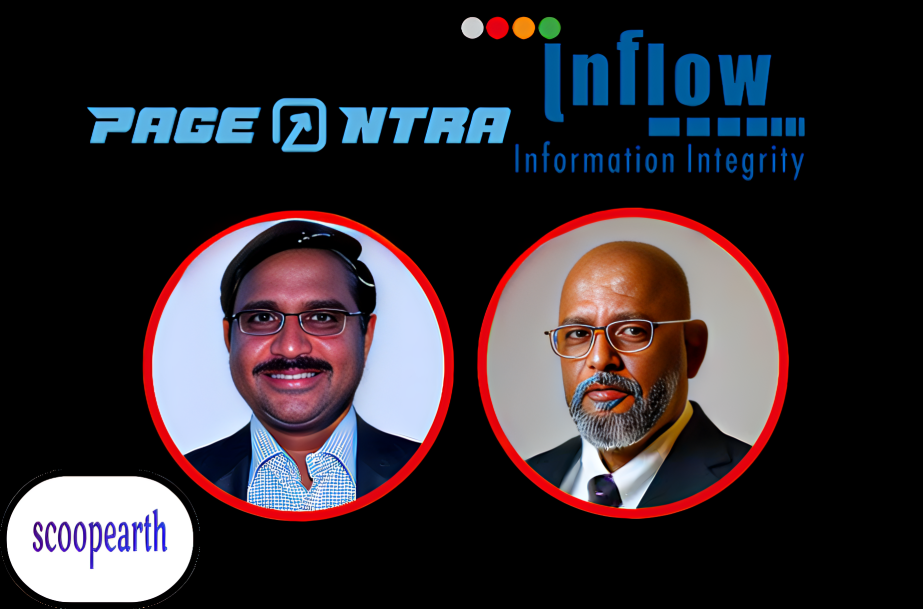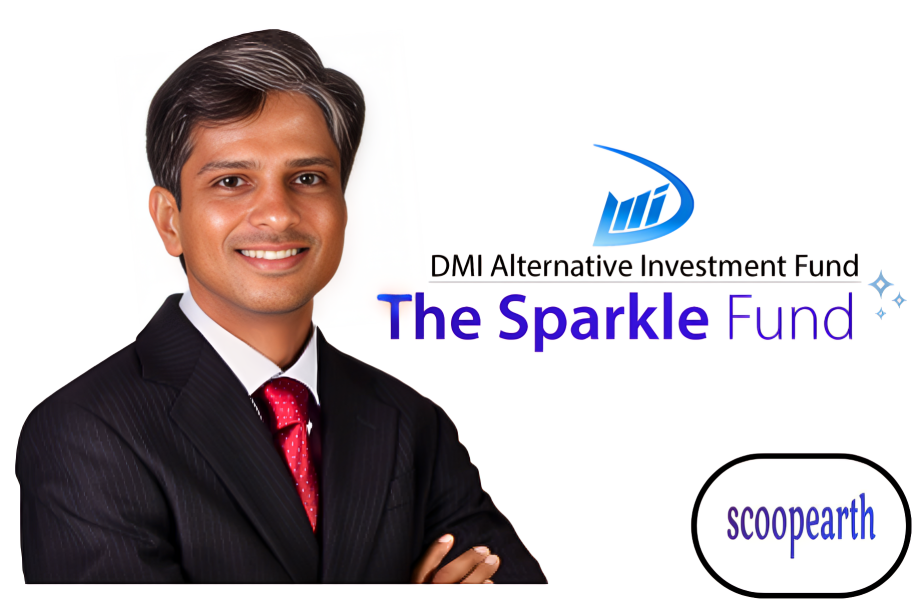RBI Governor urges industry leaders to “invest boldly and champion the entrepreneurial spirit that defines our nation”

SUMMARY
Reserve Bank of India Governor Sanjay Malhotra urged industry leaders in a speech at the FIBAC 2025 banking conference organized by FICCI to invest aggressively and embrace the legacy of entrepreneurship that sets our nation apart. His speech coincided with a period when India is making efforts to deal with the enhanced global trade uncertainty, inflationary pressures, and the changing geopolitics. The message by Malhotra was clear, which is that in spite of the difficult environment of external challenges, macroeconomic fundamentals in India are strong, and it is up to the private sector to use that opportunity and accelerate the growth and innovation in India.
Long-term investment and financing growth
The governor stated that the industry should focus on long-term investments that can change the trend of the economy instead of short-term fluctuations. He recognized the strength of domestic demand and the cushions against financial shock the system had run up to allay the pressures of global shocks, which made India a secure and promising haven to deploy capital resources.
Among several other indicators that support the economic stability in India, the Governor Malhotra cited some top points. Inflation is cooling, growth has continued at a stable pace, and the external sector is stable. The financial system is healthy and adequately capitalized, which offers a secure foundation to the businesses that aim to determine their subsequent cross-border expansion. These conditions, he suggested, should give leaders of the industry confidence to spend their resources in capacity building, innovation, and the development of new markets. He assured the business fraternity that the RBI stands ready to support a conducive policy environment. The liquidity status will be maintained so as to sustain growth, as the central bank maintains the display of its mandate of price stability.
A large part of the speech made by Malhotra was about the necessity of credit delivery and financial deepening. He pointed out that the RBI is working closely with banks and other financial institutions in order to widen access to funds, particularly to the various viable projects that may not find funding otherwise. There is an attempt being made to diversify the sources of finance, which includes further reaching the corporate bond market and other sources as well.
Malhotra repeated that inefficient systemic processes should not deny that there is a project of merit or that the state has an interest in funding. These initiatives, by the RBI, are meant to result in channeling capital to the areas where it can generate maximum growth, and hence drive economic growth more significantly. This strategy is one of the ways by which financial inclusion architecture is shifting to an inclusive method where even big firms and MSMEs have access to the necessary resources to excel.
Innovation and digital finance
On issues of regulatory rigidity, Malhotra explained that the RBI is focused on principles and adaptive. He recognized that regulation was like friction-essential to stability, but not to be stifling to growth.
This equilibrium position is especially pertinent at a time when the economy of India is shifting fast and is being transformed by digitalization, innovative business, and the emergence of industries. Malhotra assured industry leaders that RBI would strike a balance between facilitating growth and balanced financial discipline, where regulation does not hinder enterprise.
Technology played a significant role in Malhotra’s economic outlook for India. He mentioned in particular digital finance and payments that are driving the next wave of growth, and have already profoundly reshaped the financial landscape. The RBI will further encourage the efforts in innovating this space, under a safe framework to defend consumers and to ensure systemic stability. The comments made by Malhotra indicate how the central bank is transitioning to an innovation promoter of fintech technology, even when seeking to protect financial integrity.
Inclusive and sustainable growth
According to Governor Malhotra, there are a number of sectors that could position India in a growth path within the next decade. Renewable energy, technology-led manufacturing, exports, and micro, small, and medium enterprises (MSMEs) are some of the areas where investments and policies can bring a revolutionary scale of outcomes. These industries also have economic potential in addition to aligning with the sustainability and employment objectives of India. The central bank intends to promote sustained growth and competitiveness through the mobilization of funds to the areas with a high social and economic impact.
Governor Malhotra urged businesspeople to play the lead role in determining India’s economy in the future. Their leaders should consider a long-term perspective instead of focusing on short-term uncertainty, he said. Policy and enterprise have a symbiotic relationship as demonstrated in this call to action. Although the RBI has put in place the structures that create stability, it is the willingness of the private sector to invest big and with entrepreneurial spirit that will spur innovation, create job opportunities, and generate sustainable growth.
Conclusion
The speech given by Governor Sanjay Malhotra at FIBAC 2025 was not just a policy statement; it was a charge to the Indian industry to achieve its place as a growth engine. There is no doubt that macroeconomic stability, a positive regulatory environment, and direction on how to improve the propensity of the sector would encourage bullish investment and strategic expansion.
Note: We at scoopearth take our ethics very seriously. More information about it can be found here.
















